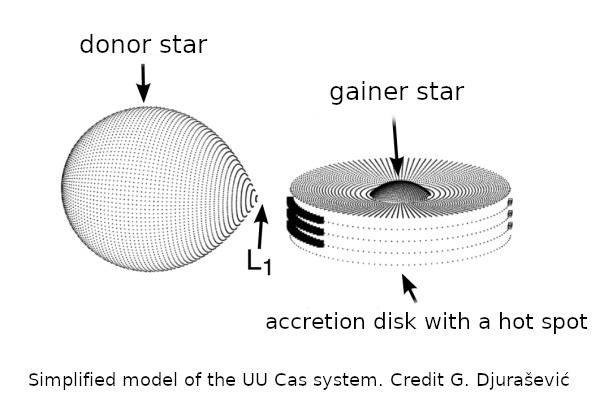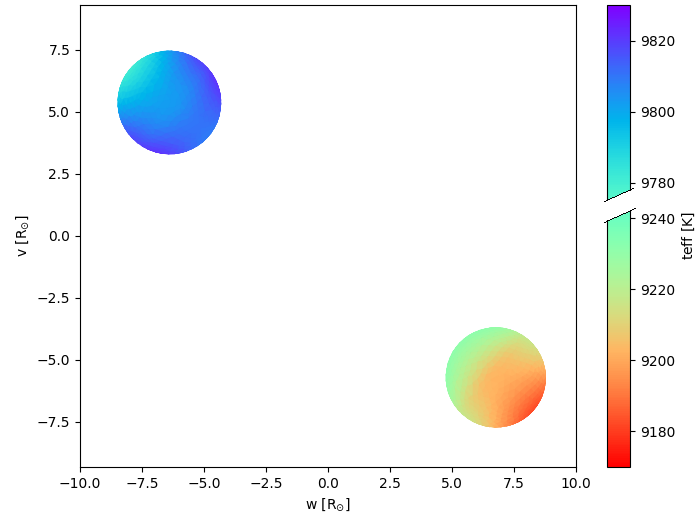Revealing the true nature of multiple star systems can be difficult, especially when at least one of the components is hidden in a gas that is an integral part of the system. Petr Hadrava from ASU led an international team that contributed to the detail description of the UU Cas system configuration. Among other telescopes, also a set of spectra acquired with the Perk’s 2-meter telescope was used in this work.
The object of interest was the optically indistinguishable binary star UU Cas in the constellation Cassiopeia. The star is relatively bright and provides a signal sufficient to obtain the accurate photometric and spectroscopic data needed to create a reliable binary star model. In the spectrum of this star, the spectral lines of only one component are clearly observable, but their Doppler shifts indicate an orbital movement around the other body. Because emission lines such as the Balmer series of hydrogen are also observed in the spectrum, it soon became clear that there was a large amount of gas in the system, probably in the form of an accretion disk, which is at least partially obscuring the second component. …
Details and contacts
- popular article at AI web page (M. Švanda, in Czech): Na čem pracujeme: Zahalená dvojhvězda UU Cas
- P. Hadrava et al., Spectroscopy of the massive interacting binary UU Cassiopeiae, Astronomy & Astrophysics, in press, preprint arXiv:2201.13275
- Contact: doc. RNDr. Petr Hadrava, DrSc., petr.hadrava@asu.cas.cz



